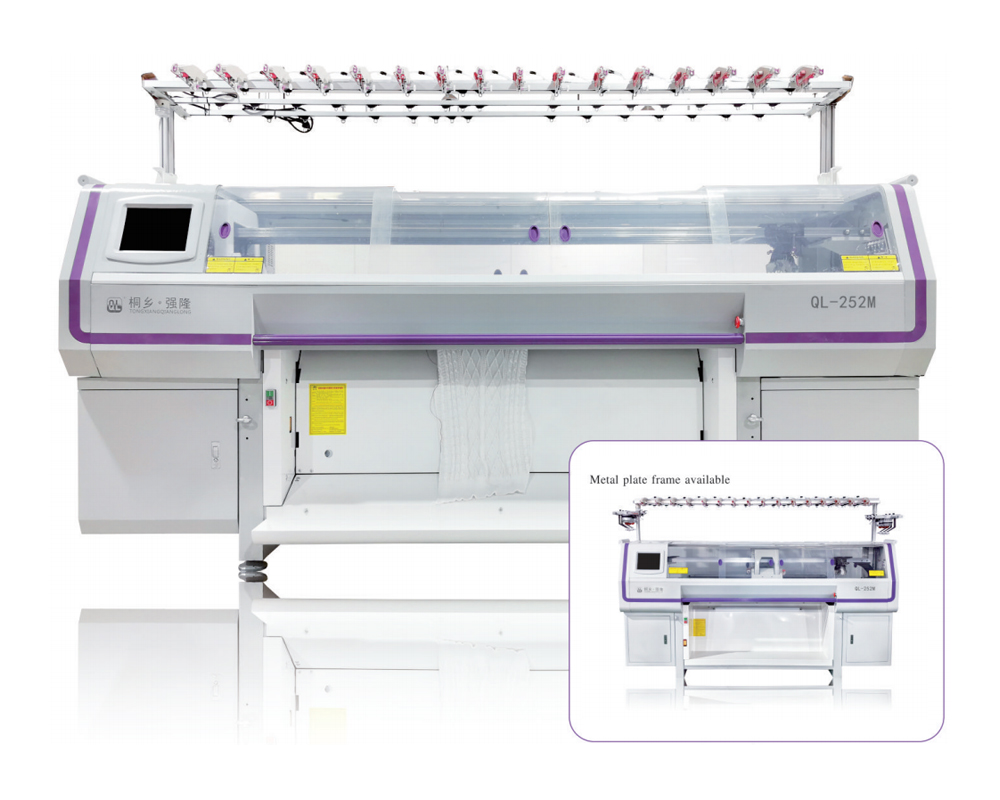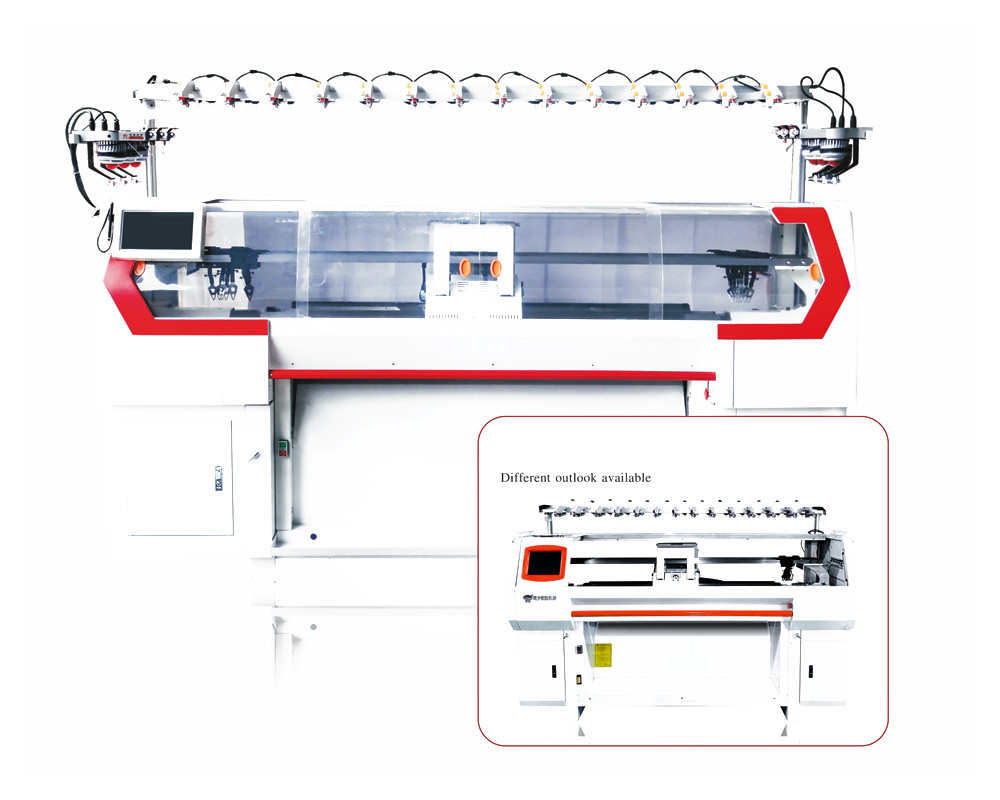Tongxiang Qianglong Machinery Co., Ltd. is high-tech China wholesale computerized flat knitting machine manufacturers, specialized in designing, developing, and manufacturing Knitting Machinery..
Computerized knitting machines, including the single-double system computerized flat knitting machines, are essential tools in modern textile production. These machines allow manufacturers to create complex and high-quality knit fabrics at high speeds. However, as with any high-tech equipment, these machines require consistent maintenance to ensure they operate efficiently and last for many years. This article explores the key maintenance requirements for computerized knitting machines, offering practical guidance on how to keep these machines in top condition and avoid costly repairs or downtimes.
Overview of Computerized Knitting Machines
A computerized knitting machine uses advanced technology to automate the knitting process, which includes controlling the yarn feed, tension, and stitch patterns via a computer. The single-double system computerized flat knitting machine is specifically designed to knit both single and double fabrics, making it versatile for a wide range of textiles and applications. These machines are typically used for mass production in industries like fashion, home textiles, and technical fabrics.
Given their complexity, computerized knitting machines need regular upkeep to function at their best. Regular maintenance not only improves machine performance but also extends its lifespan, reduces the frequency of breakdowns, and improves the quality of the finished products. Below, we break down the critical maintenance requirements for these machines.
Daily Maintenance: Essential Checks and Cleaning
Daily maintenance is crucial for ensuring that the computerized knitting machine remains in proper working order. A quick routine of inspections and cleaning can prevent minor issues from turning into major problems. These are some of the daily maintenance tasks that should be performed:
- Clean the Machine: Dust, lint, and yarn debris can accumulate in various parts of the machine, such as the needle bed, yarn guide, and motor area. Regular cleaning with a soft brush or compressed air can prevent blockages and ensure smooth operation.
- Lubricate Moving Parts: Keeping the moving parts properly lubricated is essential for reducing friction and wear. Apply lubrication to the machine's needle tracks, gears, and motor components to ensure smooth movement.
- Check Yarn Tension: Inconsistent yarn tension can lead to fabric defects such as uneven stitches. Regularly inspect the yarn feed and tensioning system to ensure that it’s correctly adjusted for smooth knitting.
- Inspect Needles and Hooks: Examine the needles and hooks for wear and damage. Damaged or worn needles can affect the fabric quality and may cause the machine to malfunction. Replace any defective needles immediately.
- Monitor the Control System: Run a basic diagnostic on the computerized control system. Ensure that the machine is properly recognizing the selected pattern and that all system alerts are functioning.

Weekly Maintenance: Deeper Inspections and Adjustments
Weekly maintenance is necessary for ensuring that both the mechanical and electronic parts of the knitting machine are functioning correctly. These tasks should be performed more thoroughly than daily checks and often require disassembling certain components for cleaning and inspection:
- Inspect Mechanical Parts: Look over the machine’s mechanical parts, such as cams, gears, and shafts. Check for any signs of wear or damage. Replacing worn-out parts early can prevent breakdowns during production.
- Calibrate Tension Systems: Yarn tension is crucial for proper fabric formation. Check and calibrate the yarn tensioning system to ensure even and consistent tension throughout the knitting process.
- Clean the Motor and Electrical Components: Dust and grime can accumulate in the motor and electrical components, affecting performance. Use a dry cloth or air blower to clean the motor, and ensure that all electrical connections are secure.
- Examine the Needle Bed: Inspect the needle bed for signs of misalignment or damage. Misalignment can cause stitching problems and affect the quality of the knitted fabric.
Monthly Maintenance: Thorough Inspections and Adjustments
Monthly maintenance tasks are more detailed and involve thoroughly inspecting both the mechanical and electronic systems. This is the time to identify and fix issues that could become more problematic if left unchecked. Key tasks include:
- Check and Recalibrate the Electronics: Run full diagnostics on the computerized system, including the motherboard, sensors, and software. Recalibrate the electronics to ensure accurate stitch programming and pattern recognition.
- Inspect and Clean the Yarn Feed Mechanism: Inspect the yarn feed for potential blockages and clean any debris. Check that the yarn guide system is functioning smoothly and adjust if needed.
- Check for Loose Parts: Tighten any loose screws, nuts, or bolts on the machine frame and other parts. Regular tightening helps prevent vibrations that could damage the machine and affect fabric quality.
- Re-align the Needle Bed: Misalignment of the needle bed can result in uneven stitches. Ensure that the needle bed is properly aligned with the machine's body to avoid this issue.
Annual Maintenance: Full Overhaul and Professional Inspection
Annual maintenance is the most extensive form of maintenance and should ideally be performed by a professional technician. This maintenance involves a complete overhaul of both the mechanical and electronic components. Annual maintenance ensures that the machine is thoroughly inspected, cleaned, and adjusted to maximize performance. Tasks include:
- Full System Diagnostic: Conduct a full diagnostic check on both the mechanical and electronic systems. Ensure that the computer is running the latest software version and that all sensors, motors, and systems are responding correctly to commands.
- Comprehensive Cleaning: Clean the entire machine thoroughly, including all internal components. Remove any dust or debris that has accumulated over the year and apply lubrication to all moving parts.
- Replace Worn Parts: Replace any parts that show signs of significant wear, such as worn-out needles, gears, or motors. Regularly replacing parts can prevent costly repairs and downtime.
- Recalibrate the Entire Machine: Recalibrate the machine’s systems, including the needle bed, yarn feeder, and electronic controls. This will ensure the machine performs at optimal levels for the coming year.
Importance of Regular Maintenance
The regular maintenance of computerized knitting machines, including single-double system computerized flat knitting machines, is essential for ensuring that the machine operates at peak performance and lasts for many years. Some of the key benefits of regular maintenance include:
- Increased Machine Longevity: Regular maintenance helps extend the lifespan of the machine by addressing minor issues before they develop into costly problems.
- Improved Efficiency and Productivity: A well-maintained machine operates more efficiently, which leads to higher productivity and fewer production delays.
- Higher Fabric Quality: Consistent maintenance ensures that the knitting process remains smooth, resulting in high-quality fabrics with consistent patterns and textures.
- Reduced Downtime and Repair Costs: Proactive maintenance helps identify and fix issues before they lead to machine breakdowns, reducing downtime and costly repairs.

 English
English 简体中文
简体中文
 Chinese
Chinese English
English











